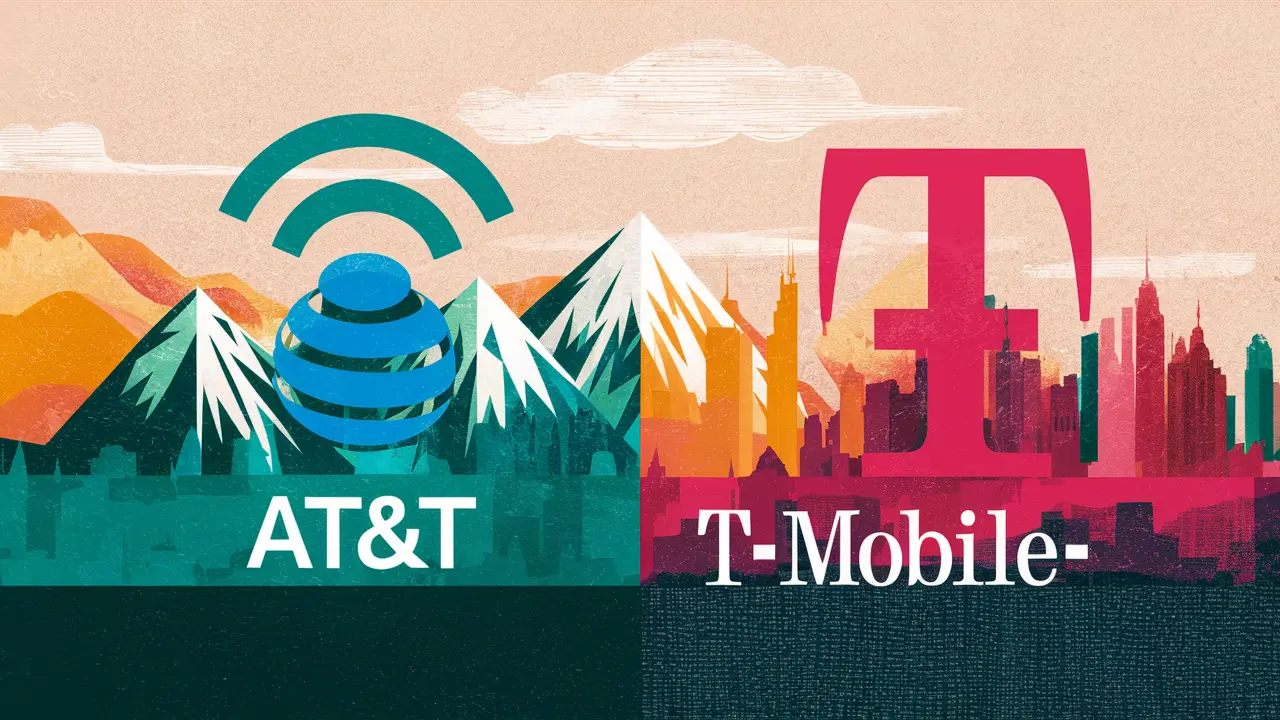Does AT&T have better signal than T-Mobile?

Believe it or not, the strength and the extent of the network coverage of the two companies are some of the most critical aspects that concern many users when considering the available options in the form of AT&T and T-Mobile. Verizon and AT&T assure their users that the former has the best, and the latter has the most reliable network throughout the United States, but in fact, the situation can be completely different depending on the place of residence and frequently visited states. It must be noted that AT&T usually outperforms T-Mobile in rural regions, while T-Mobile does better in large cities. Nevertheless, both networks are aggressively seeking to increase and enhance their 4G LTE network.
AT&T 4G LTE Coverage
Being one of the largest national carriers, AT&T has been heavily investing in the LTE network throughout the USA. From the latest statistics available, AT&T Internet has more than 400 million people covered with its LTE network. They proudly state that they cover more than 99% of the population of America through their wireless and wired Internet connections. Measures of actual speeds may vary depending on the amount of congestion and the location, but according to OpenSignal’s latest State of the Mobile Network report, AT&T was recording average download speeds of 29.9 Mbps across the country. This measure of average download speed makes AT&T the fastest nationwide network. Especially in rural Midwest areas and throughout the rest of the South, AT&T remains ahead with faster, more dependable 4G than its rivals. Still, they experience more congestion problems that lead to lower speeds in populated coastal cities. However, their vast low and mid-band spectrum assets enable AT&T to be great at providing far-reaching rural service.
T-Mobile 4G LTE Coverage
Undaunted, T-Mobile has gone on the offensive in terms of availability as well. Their reports now claim that they have 99% population of America covered under their LTE network as well. T-Mobile’s average download speed in the latest report by OpenSignal is 28.9 Mbps, which is less than a single Mbps behind AT&T on average across the country. However, in some of the regions, such as the Northeastern and West Coast, together with the big cities like New York, Los Angeles, and San Francisco, T-Mobile either matches or surpasses its competitors. For instance, the customers from T-Mobile in both NYC and LA expected speed tests of over 33 Mbps on average, which is 3-4 Mbps ahead of the competitors based on the 2021 data.
T-Mobile's aggressive ramp-up of the mid-band 5G spectrum provides T-Mobile with a capacity and speed edge. Some of those network enhancements were initially aimed at the urban centers only, but are increasingly stretching across the nation. While this gets going in 2023, he said this could be an advantage to T-Mobile. At the same time, AT&T also keeps on getting new spectrum and has a target of getting C-band 5G to over 200 million Americans by 2023 as well. Consequently, 5G competition will stay competitive.
Rural vs. Urban Differences
So, the story stays the same and is still the story of the contrast between urban and rural networks. States such as Mississippi, Arkansas, Kentucky, and others, tested speeds and coverage indicate that AT&T is significantly better than others for 4G LTE access. It is because their 700 MHz and 850 MHz spectrum can go through the walls of buildings and can cover great distances. Verizon also enjoys good results in these areas, partly due to the rural buildout conditions that were made when obtaining the 700 MHz in the past several years.
On the flip side, T-Mobile consumers are nearly 50% more likely to declare no signal at all in excursion areas compared to rural areas from metro areas, according to analyst firm Moffett Nathanson. However, the opposite seems to be the case in the largest cities. In New York, for instance, 19.5% of the AT&T clients stated they had no service, while 13% of Verizon clients and only 10% of the T-Mobile clients had a similar problem, as per the 2021 data. Once more, T-Mobile’s mid-band 5G rollout objectives include continuing to reduce these rural versus urban performance disparities. However, based on the currently available spectrum and the timeline that competitors will take to erect many new rural towers required to challenge AT&T, analysts feel that the company will continue to hold an overall coverage leading up to 2025.
Network Investment
Verizon Wireless spent the most on sustaining its excellent network of its kind, $10 billion on spectrum, and $15 billion on service and extension in the year 2022. AT&T incurred capital expenditures of $6.6 billion for spectrum acquisition and $5 billion on new facilities and labor on their networks. On the other hand, T-Mobile spent $7 billion on spectrum in the year before, and it plans to spend over $13 billion on network upgrades in the coming years, as per the third quarter of 2022 earnings report of the carrier. These investments by both AT&T and T-Mobile rely on proving that 5G coverage will expand rapidly in locations where they are behind competitors.
Travel Considerations
To this end, for those traversing through America frequently or in rural areas, AT&T retains the current dominance in the 4G network. Taking into account that they have a broader portfolio of low-frequency bands that are appropriate for different geographic regions, customers who require end-to-end connectivity across the coast will benefit more from AT&T.
Today. Nevertheless, T-Mobile attempts to compensate for some deficits in the rural areas with new programs enabling unlimited talk, text, and 2G data in roaming. Their network coverage maps give direction on primary pockets versus those of partners’ additional reach. Thus, T-Mobile users are not completely out of options when traveling, but slower roaming speeds are something to recognize, which can be testified by current independent tests.
Focusing on cities or suburbs helps T-Mobile, as they have massive potential for 5G speeds because of mid-band spectrum strengths. Still, AT&T gets credit for today’s rural availability, ty while their C-band 5G buildout plans to add capacity in the next few years. Depending on your travel patterns, both networks seek to further improve the progress of head-to-head competition across the country for 5G coverage. However, as of now, testing validates the years of standing that AT&T has been the provider with the best rural coverage, while T-Mobile meets the needs of the metro areas. Think About the Usage Requirements When Selecting Between These Major Carriers.
Upgrade to faster, more reliable AT&T Fiber Internet today! Call us at +1 844-905-5002 and get connected with speeds that keep you ahead.





